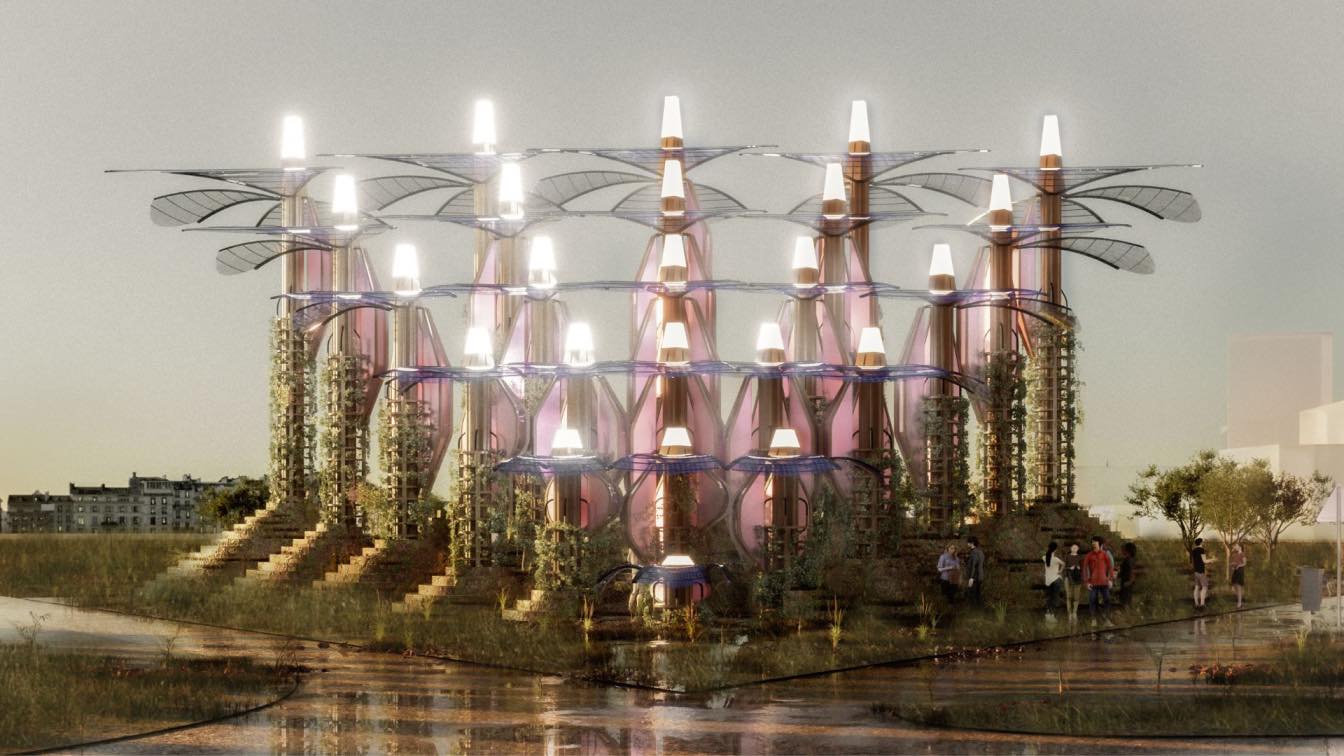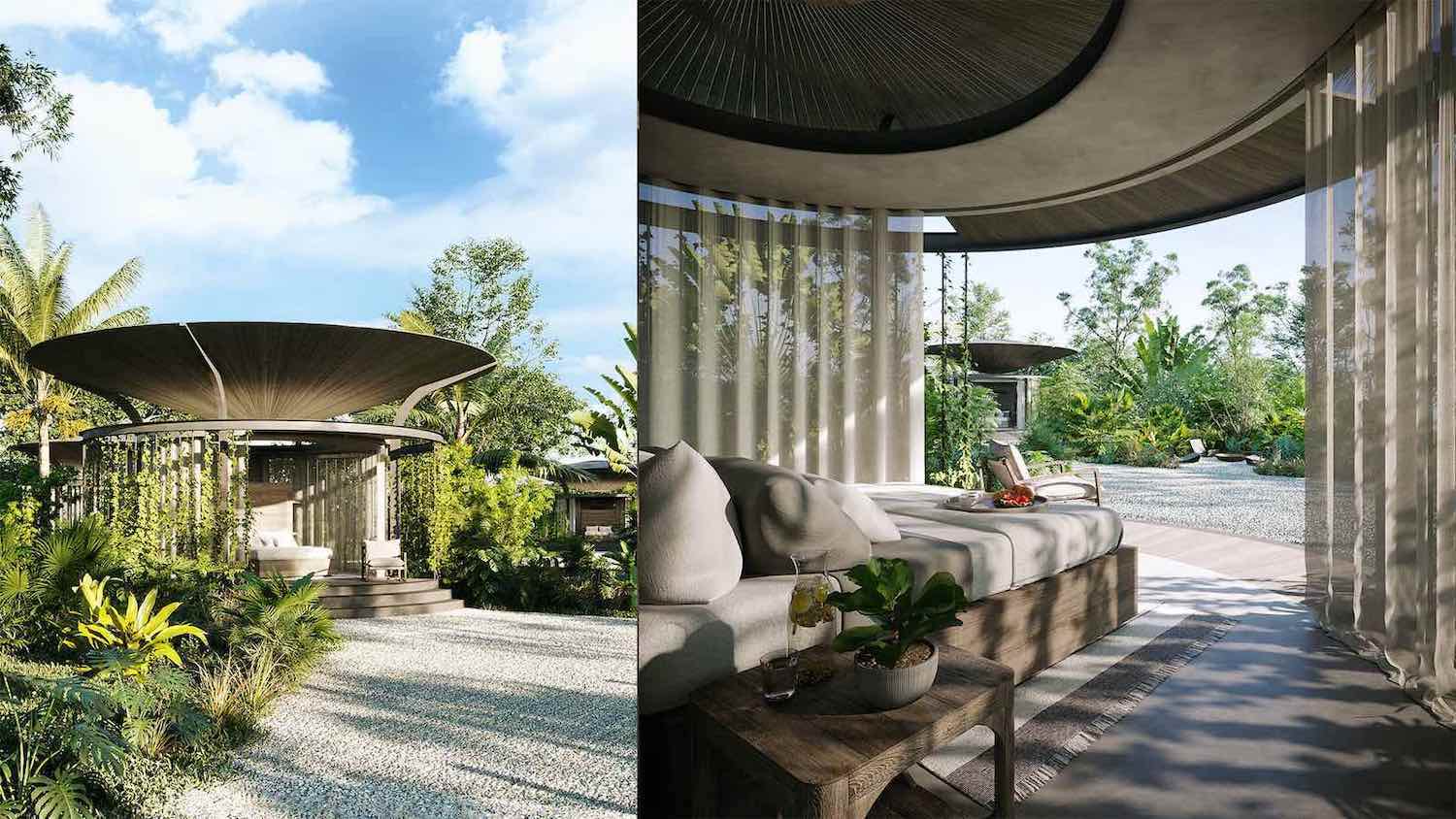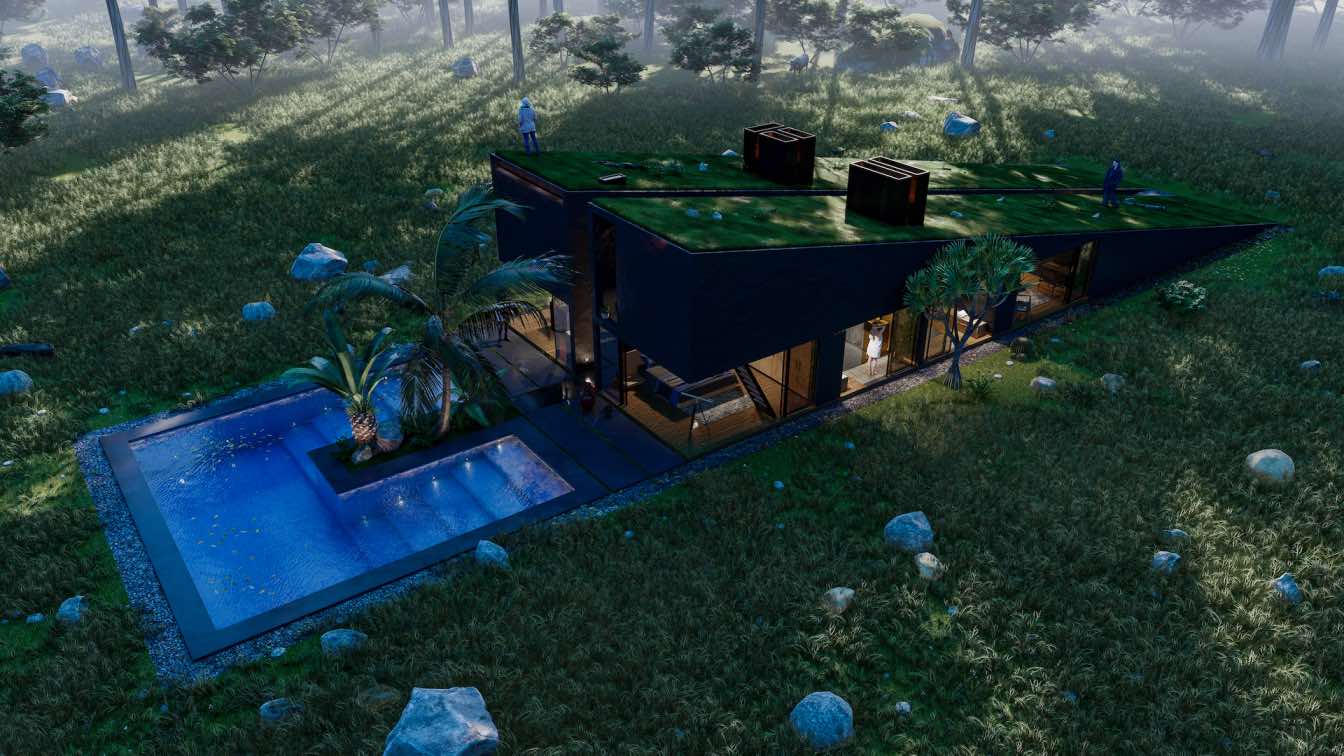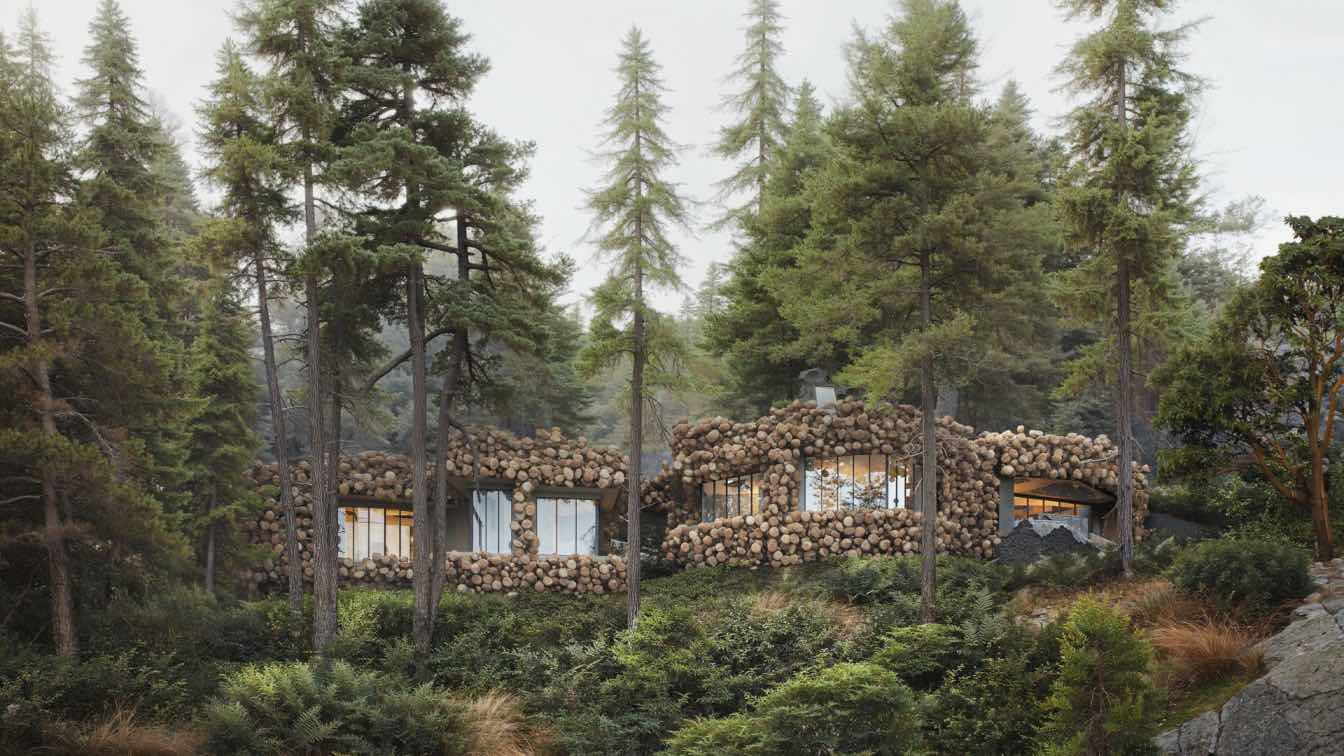Aditya Mandlik Studio: “IN TIME?” is a giant clock for the city of Mannheim, ticking away towards a sustainable future, generating about 1077.6 MWh of energy annually. Positioned at a cross junction of streets and the existing railway route, the circular form becomes a contrast to the current and proposed landscape.
The public art proposal, made up of Seven Pie-shaped public spaces, represents seven days a week. Each pie hosts twenty-four columns representing the number of hours in a day. As time passes, the column glows, performing an act that attempts to address the current urgency.
The design of each PIE is primarily a composition of the “ground” and the “column cluster”. The design of the “ground” and the “column cluster” is addressed by local parameters and pre-existing street composition and incident radiation. The ground is designed using both, abstract and non-abstract compositions, to encourage play and enhance creativity. In some cases, the morphology of the ground addresses a specific functional use case while others do not, allowing the conduct of public interventions.

Each “Hour-column” within the column cluster is a global element responding to local conditions due to its parametric design approach. The hour column also acts as the metabolic element within the proposal. It is composed of light cones, solar fins, horticulture pods, vertical gardens, and energy reservoirs in a top-to- bottom orientation, respectively. There are hundred and sixty-eight, “hour columns” representing one week.
Primarily incident radiation on the geometry of each pie is calculated for the summer, starting from April to the month of October. The geometry is further optimised algorithmically to maximise its radiation exposure. Twenty-four of the “hour-columns” are organised in the same geometric pattern for each of these pies. However, the modulations and the resulting variations of the optimised geometry reflect in the differential heights of these columns. The column design remains fixed proportionally.
The Solar Fins on these columns are made of Multi-Junction Solar Cells which have a higher conversion efficiency (theoretically C.E. = 86.8%) than that of traditional photovoltaics (theoretically C.E. = 33.3%)(1). However, for the energy production calculation for this proposal, the conversion efficiency is assumed to be 42.5% to reflect a real-life scenario. “The ground” houses energy reservoirs and their connections with the city grid. On calculating 42.5% of annual incident radiation, the proposal is set to generate 1077.6MWh. Each Pie has a significant contribution with Pie 1 at about 14.67%, Pie 2 at 16.38%, Pie 3 at 15.08%, Pie 4 at 11.64%, Pie 5 at 14.72%, Pie 6 at 11.50%, Pie 7 at 15.97%. About 67% of the total energy produced is directed towards the city grid, supporting approximately 200 households based on the average household consumption of 3500kWH(2), and the remaining 43% is utilised by the proposal itself.

However, partially filtered wastewater is drawn from the city grid for the maintenance of vertical gardens and to aid the process of plantation growth from seed to the sapling stage, housed within the horticulture pods. Of the 43% of self-utilised energy, 28% is utilised for vertical farming processes, 11% for the rotatory motion of (Solar)Sub-Fins on activation, and a mere 4% for lamps.
“in TIME?” promotes and emphasises Sustainable Development Goals,
Goal 13. “Take urgent action to combat climate change and its impacts”.
Whilst addressing and reflecting upon -
Goal 3. Ensure healthy lives and promote well-being for all at all ages.
Goal 7. Ensure access to affordable, reliable, sustainable and modern energy for all. Goal 12. Ensure sustainable consumption and production patterns
Conceptually the design finds it necessary to address the “idea of urgency” as a collective, through the climate crisis. The proposal creates an urgency to act now towards a sustainable future through metabolic processes as systems and their deep integration within our lives to be sustainable on our spaceship earth and this design proposal is just one small step towards that goal.
















